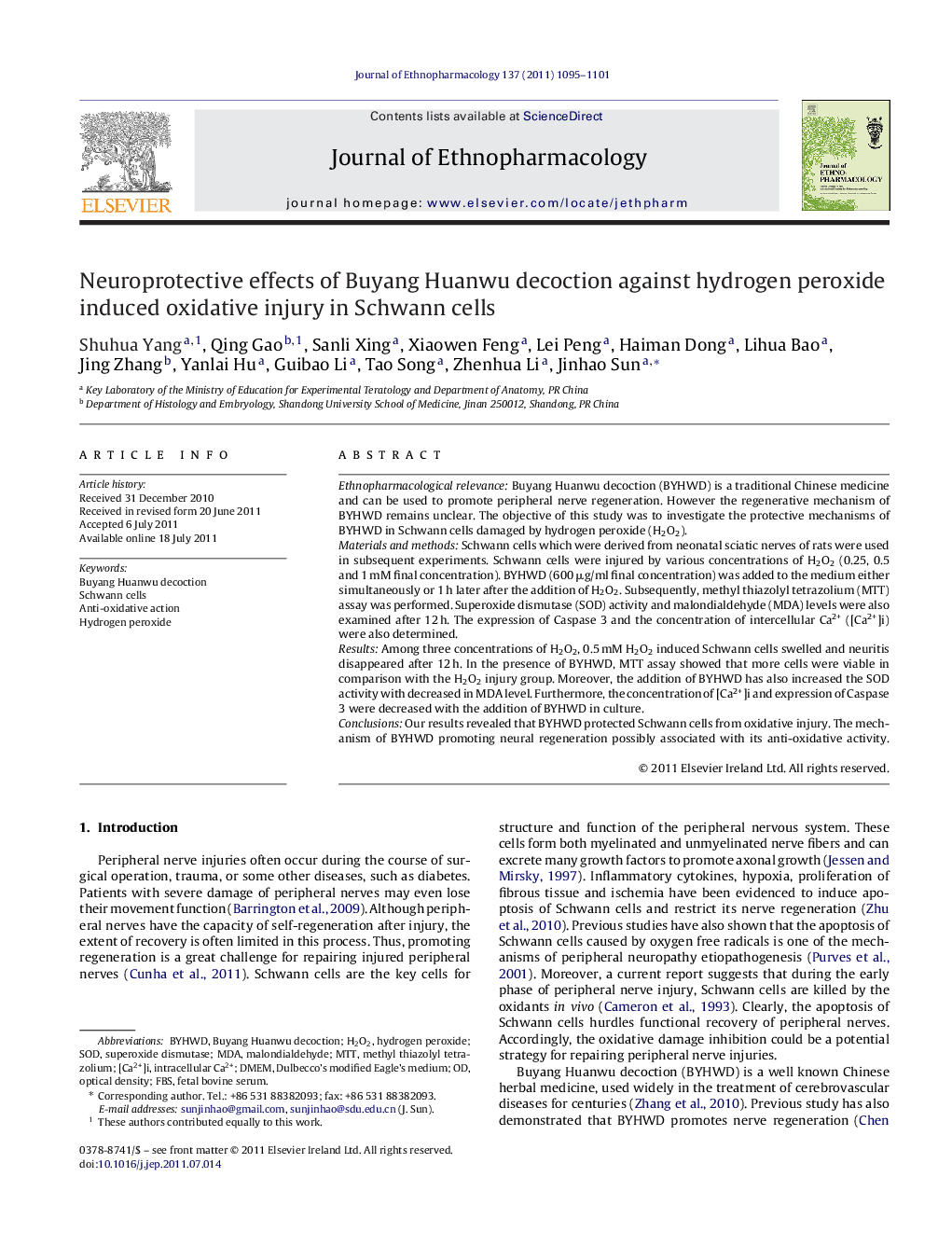| Article ID | Journal | Published Year | Pages | File Type |
|---|---|---|---|---|
| 5839337 | Journal of Ethnopharmacology | 2011 | 7 Pages |
Abstract
Ethnopharmacological relevanceBuyang Huanwu decoction (BYHWD) is a traditional Chinese medicine and can be used to promote peripheral nerve regeneration. However the regenerative mechanism of BYHWD remains unclear. The objective of this study was to investigate the protective mechanisms of BYHWD in Schwann cells damaged by hydrogen peroxide (H2O2).Materials and methodsSchwann cells which were derived from neonatal sciatic nerves of rats were used in subsequent experiments. Schwann cells were injured by various concentrations of H2O2 (0.25, 0.5 and 1 mM final concentration). BYHWD (600 μg/ml final concentration) was added to the medium either simultaneously or 1 h later after the addition of H2O2. Subsequently, methyl thiazolyl tetrazolium (MTT) assay was performed. Superoxide dismutase (SOD) activity and malondialdehyde (MDA) levels were also examined after 12 h. The expression of Caspase 3 and the concentration of intercellular Ca2+ ([Ca2+]i) were also determined.ResultsAmong three concentrations of H2O2, 0.5 mM H2O2 induced Schwann cells swelled and neuritis disappeared after 12 h. In the presence of BYHWD, MTT assay showed that more cells were viable in comparison with the H2O2 injury group. Moreover, the addition of BYHWD has also increased the SOD activity with decreased in MDA level. Furthermore, the concentration of [Ca2+]i and expression of Caspase 3 were decreased with the addition of BYHWD in culture.ConclusionsOur results revealed that BYHWD protected Schwann cells from oxidative injury. The mechanism of BYHWD promoting neural regeneration possibly associated with its anti-oxidative activity.
Related Topics
Health Sciences
Pharmacology, Toxicology and Pharmaceutical Science
Pharmacology
Authors
Shuhua Yang, Qing Gao, Sanli Xing, Xiaowen Feng, Lei Peng, Haiman Dong, Lihua Bao, Jing Zhang, Yanlai Hu, Guibao Li, Tao Song, Zhenhua Li, Jinhao Sun,
